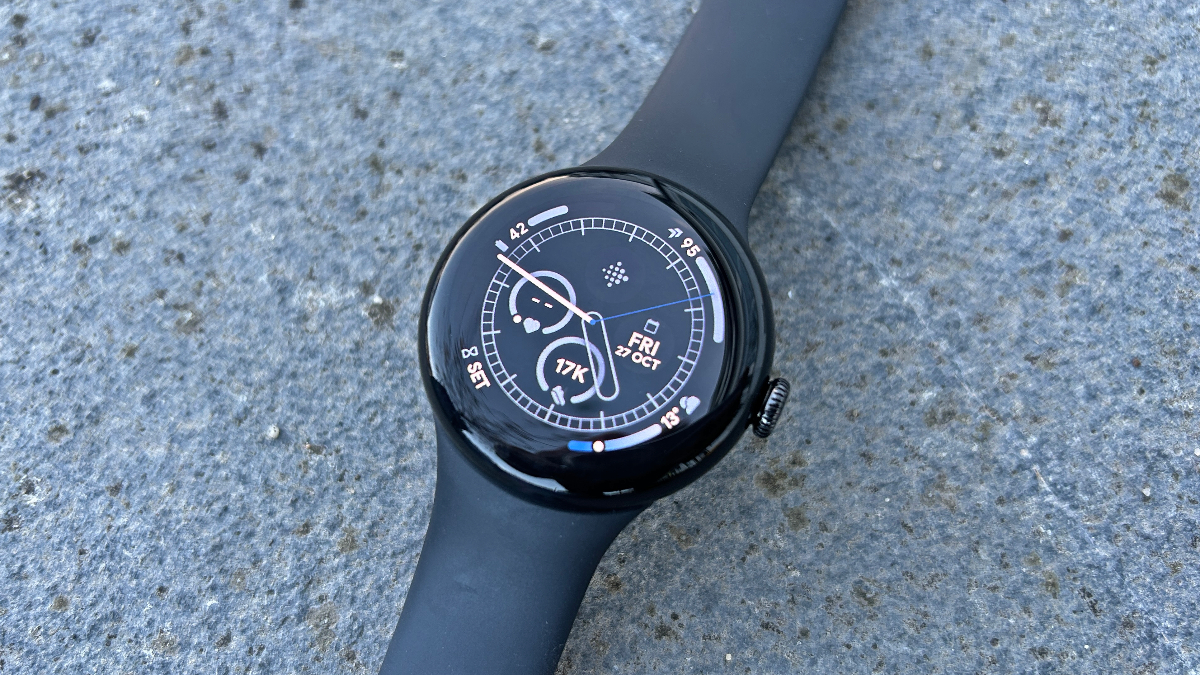Our Verdict
The Google Pixel Watch 2 is an improvement on the original Pixel Watch and a good fitness smartwatch, with impressive health and activity tracking. However, its sports tracking is still basic, and the smart features aren’t as developed as on rivals like the Apple Watch.
For
- Improved battery life
- Attractive, lightweight design
- Good health and activity tracking
Against
- Battery life still short
- Basic sports tracking
- Only works with Android phones
You can trust Coach
The Google Pixel Watch 2 has been upgraded in a few key areas compared with the original Pixel Watch and, importantly, it now lasts a day on a charge reliably with the screen always-on. However, it still falls short of the standard of the best fitness smartwatches, with basic sports tracking a drawback in particular.
Google Pixel Watch 2: Price And Availability
The Google Pixel Watch 2 launched in October 2023 and costs $349 in the US and £349 in the UK for the standard model and $399/£399 for a cellular (phone network) watch. That’s the same price as the original Pixel Watch in the US, while in the UK both the standard and cellular models have increased in price. There are three colors to choose from and it comes with a six-month subscription to Fitbit Premium.
How I Tested This Watch
I’ve been wearing the Google Pixel Watch 2 for two weeks, using it to track all my daily activity and sleep, as well as workouts. I run almost every day and have tracked bike rides, strength sessions and yoga with the watch. I have also tested the original Pixel Watch, every generation of the Apple Watch, and other fitness smartwatches from Samsung and Huawei.
Design And Hardware

I love the design of the Google Pixel Watch 2, which is light and comfortable to wear at all times and has a bright 1.2in AMOLED screen. The 41mm (1.6in) circular case is sleek and it’s easy to navigate the watch’s menus using the button and rotating dial—there was no lag during my testing.
The watch is now made from recycled aluminum rather than steel, which brings the weight down to 31g without the band (the original Pixel Watch was 36g). The watch has a 5ATM water-resistance rating, so it’s waterproof to depths of 50m.
One major update is the new multipath optical heart rate sensor, which has more LEDs and diodes than the sensor on the original Pixel Watch, with Google claiming greater accuracy as a result.
The Pixel Watch 2 has a compass and altimeter and offers GPS tracking via multiple satellite systems (GPS, Galileo, GLONASS, Beidou and QZSS). It can measure blood oxygen saturation and take an electrocardiogram (ECG), and it adds the continuous electrodermal activity (cEDA) sensor on Fitbit smartwatches, which measure tiny amounts of sweat on your skin to estimate stress levels.
Sign up for workout ideas, training advice, reviews of the latest gear and more.
You need a phone running Android 9.0 or newer to use the Pixel Watch 2, which won’t work with iPhones.
Health, Activity And Sleep Tracking
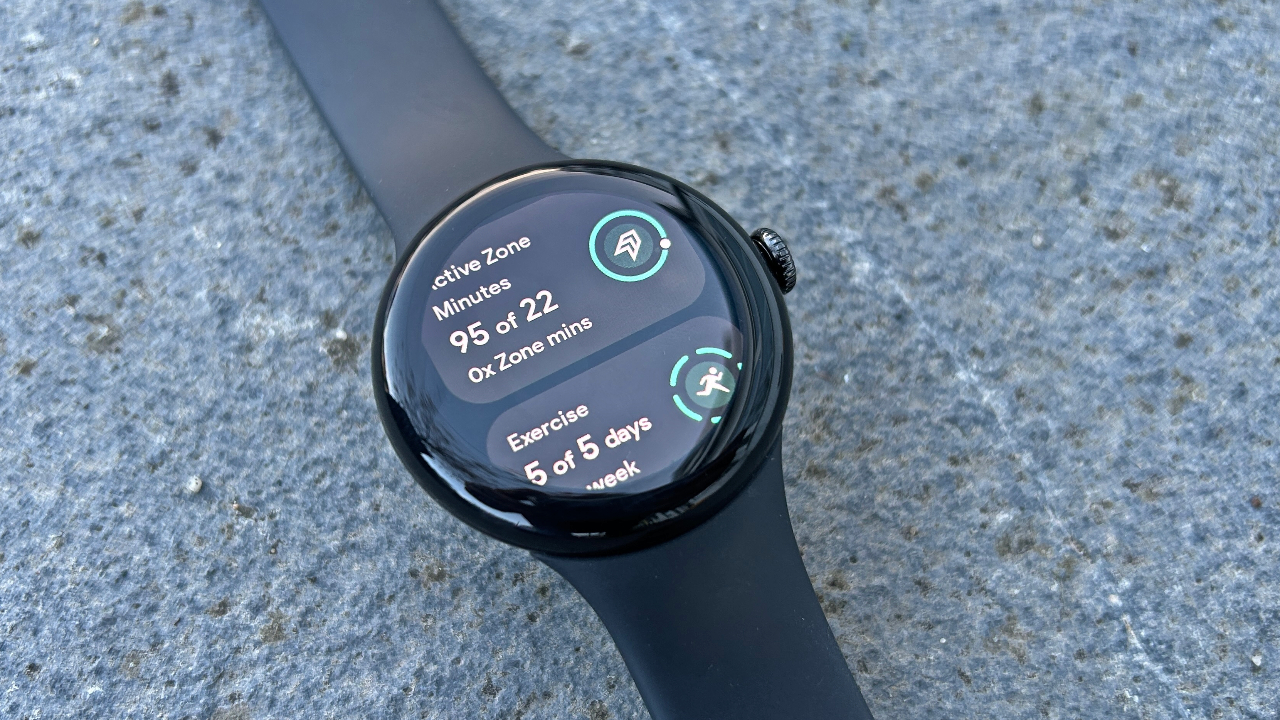
The activity and health tracking is excellent, since it has essentially been outsourced to Fitbit. You can take ECG measurements and your blood oxygen saturation and skin temperature is measured at night, and the watch checks your electrodermal activity throughout the day, alerting you when it detects a period where you seem stressed, so you can log factors that may be causing it.
The watch tracks steps, calories, floors climbed and active zone minutes, and will prompt you to move each hour. It’s the same highly useful set-up as on top Fitbits like the Charge 6 and Sense 2.
The Pixel Watch 2 also gives you a daily readiness score taking into account factors such as recent activity and sleep, and a stress management score based on the EDA scans and your sleep and activity.
There’s an overlap between these scores, though I found the stress management score more consistent and useful: Fitbit’s readiness score is always low for me, based on the amount of running I do (even though this activity level is normal for me) and it’s skewed if you have poor heart rate readings during a workout, which I often did.
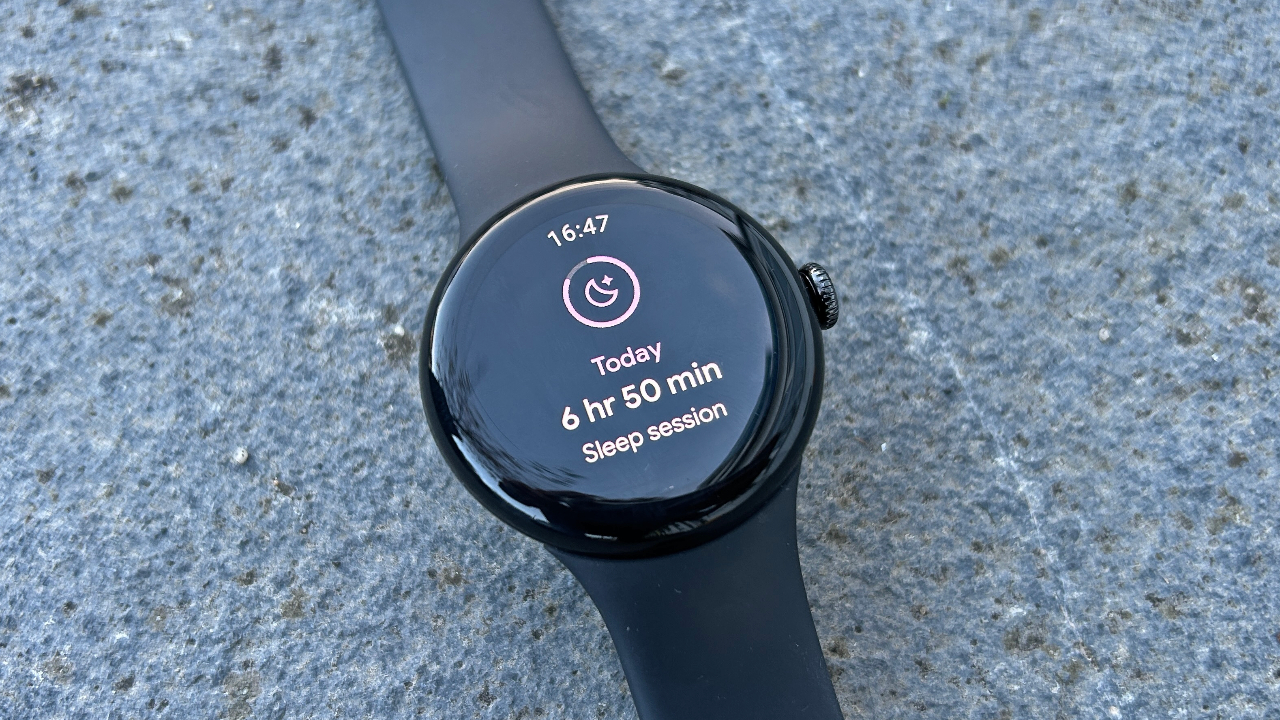
The sleep tracking on the Pixel Watch 2 is detailed and fairly accurate. However, it did sometimes break my night into two blocks of sleep if I was awake for a long spell in the middle of the night. This resulted in a low sleep score for one 4hr 40min block of sleep, even though if this was combined with the second 2hr 20min block it measured I would have had an OK night overall.
A drawback with the Pixel Watch 2’s health and sleep tracking is that several of the advanced features are behind the Fitbit Premium paywall. These include readiness and a detailed look at your sleep and stress management scores. You receive six months of Premium when you buy the watch, but thereafter it’s $9.99/£7.99 a month, or $80/£79.99 a year.
Sports Tracking And Accuracy
The native sports tracking on the Pixel Watch 2 is provided by the Fitbit Exercise app, rather than the Google Fit app, though the latter is available in the Google Play store. The Fitbit app is basic, with limited customisation of sports modes, and it doesn’t provide the breadth of stats you can get elsewhere. You can’t see split pace during runs, for example, let alone get advanced running technique stats or running power, which are available on sports watches and the Apple Watch.
Unlike the Apple Watch, there are not fantastic third-party apps available that can turn the Pixel Watch 2 into a sportier device. I tried a couple and found Ghostrunner OK, though it’s nothing like as impressive as WorkOutDoors on the Apple Watch. You can get popular apps like Strava and Nike Run Club, but they are somewhat basic, and no more advanced than the native Fitbit app.
For casual sports tracking the native app is fine with regards to the info available, but I did have accuracy problems with the watch. The new heart rate sensor was far from infallible: Often, during runs in particular, my heart rate reading would be too high throughout the workout when compared with the reading from a Polar H10 chest strap.
The reading was more accurate during strength sessions and yoga. On runs it sometimes had an incorrect spike in heart rate in the first five to 10 minutes and then settled down to be fairly accurate for the rest of the run. The heart rate tracking is on par for an optical sensor on a watch, but it’s not something I’d feel comfortable relying on to judge efforts during workouts. This is a shame because the Pixel Watch 2 offers targets in workouts, including for heart rate, so you can set the heart rate zone you want to be in and it will buzz at you to help you stay there during your session. If the HR is accurate, this is a handy feature; if it isn’t, it’s annoying.
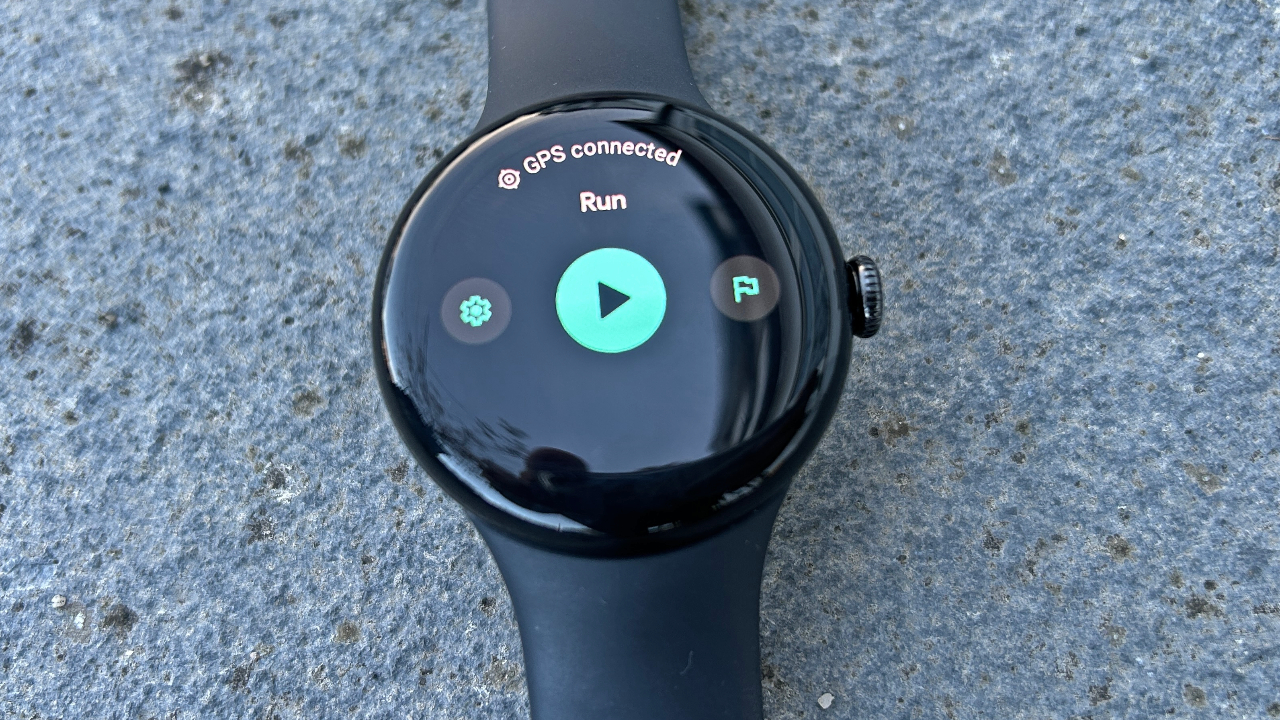
I had mixed results with the GPS accuracy. Unlike the Fitbit Charge 6, the Pixel Watch 2 was able to lock on to GPS satellites at the start of an outdoor activity relatively quickly each time, but I had mid-run drop-outs a couple of times. This then affects the accuracy of the distance and pace tracking throughout the rest of the run, though the watch still uses its accelerometer to judge distance fairly well.
Overall, the GPS accuracy wasn’t too bad when it stayed locked on, with the Pixel Watch 2’s readings reasonably close to that of the Garmin Epix Pro in its most accurate tracking mode. The Epix Pro and other watches with multi-band GPS like the Apple Watch Ultra 2 or Coros Pace 3 are more accurate than the Pixel Watch 2, but it’s not wildly inaccurate, unlike other Fitbit watches and trackers I’ve tested.
Battery Life
One of the major problems with the original Pixel Watch was that it didn’t reliably last a day when the screen was in always-on mode, which fortunately is no longer the case with the Pixel Watch 2. I charged the watch in the evening just before going to sleep, then wore it to track my sleep and, in the morning, it usually had 83%-85% left for the day ahead (this is with the watch in night mode overnight). Even with a long run using the GPS and the screen always-on, the Pixel Watch lasted through to the evening in my testing.
This is the same experience as with the Apple Watch Series 9, and it’s sometimes stressful trying to find a time to charge either watch before going to sleep so you can use them to track your rest. It’s not great, but for a performance-focused smartwatch like the Pixel Watch 2, one day of juice is the best I’d expect.
Smart Features
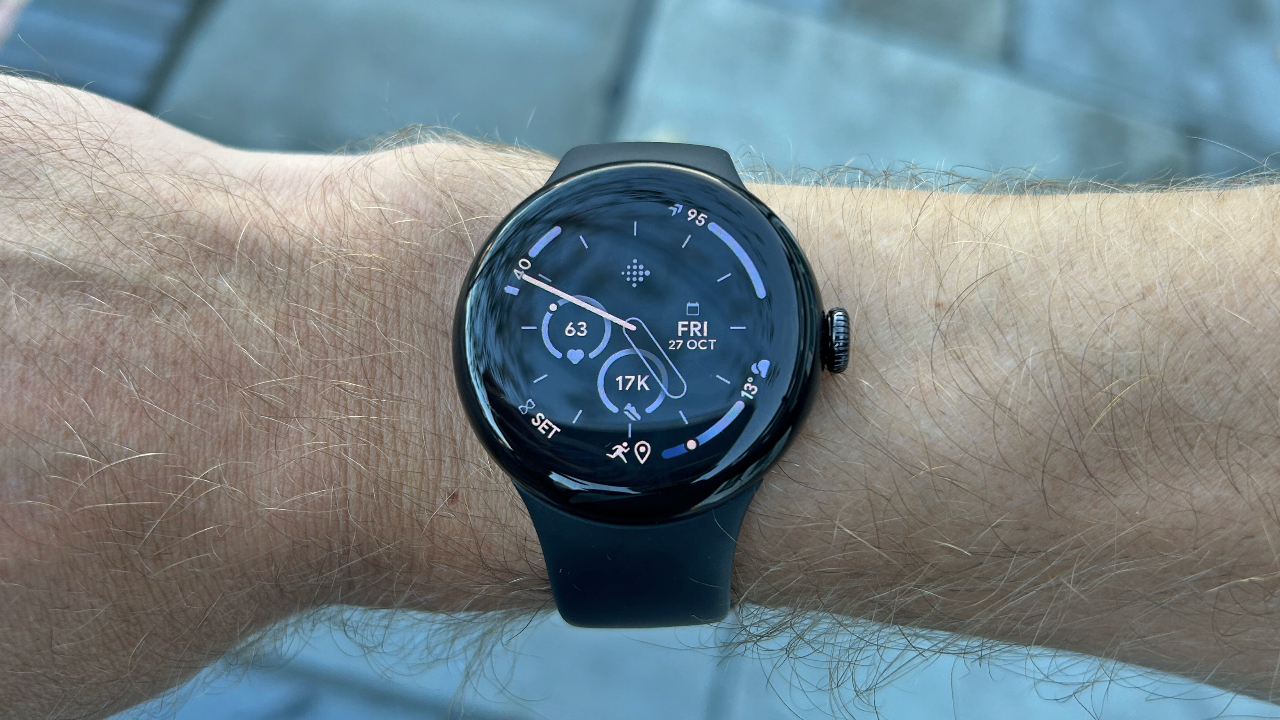
The Google Pixel Watch 2 is a smartwatch, with cellular (phone network) capabilities that mean you can receive and reply to a variety of notifications, make calls and stream music without your phone, if you have a plan. The Google Play app store is also loaded with useful apps, even if the sports tracking section is not as impressive as with Apple’s App Store.
There is a new safety feature on the watch, which requires a cellular connection. With this you set a certain amount of time for an activity and if you don’t check in to say you’ve completed the activity within that time, the watch will alert your emergency contacts and give them your real-time location.
There is close integration with Google apps, like Wallet, Gmail and Maps, which makes for a seamless smartwatch experience. You can stream music and sync playlists to the watch through a variety of providers, including Spotify, and not just Google-owned YouTube Music.
The smarts on the Google Pixel Watch 2 are central to its appeal and help it to stand out from Android devices made by brands like Huawei, which may be better sports trackers but are not as smart as the Pixel Watch 2.
Is The Google Pixel Watch 2 Worth It?
The Google Pixel Watch 2 is a great activity tracker and smartwatch, and a poor sports watch. If you have an iPhone or are picking between iOS and Android in general, the Apple Watch Series 9 is a better option, but if you’re on Android and want improved sports tracking then a semi-smartwatch like the Amazfit T-Rex 2 or Garmin Vivoactive 5 is a better bet than the Pixel Watch 2.
If sports tracking isn’t that important to you, the Pixel Watch 2 is a good pick and it’s the best watch within the Fitbit line-up. It has an attractive design and the improved battery life makes a big difference to the day-to-day experience of using it compared with the original Pixel Watch. I also preferred it to Samsung watches I’ve tested, though the Galaxy series contains some attractive options for those who like chunky watches.
I’d still say Google needs to do a lot with the watch to make it comparable to the Apple Watch. Using the Pixel Watch 2 feels familiar to the experience of using an early generation Apple Watch, and it certainly lacks the smarts and sports tracking available on the Series 9. However, if you are on Android and want the best smartwatch available, as long as sports tracking isn’t a priority, the Google Pixel Watch 2 should be at the top of your list.

Nick Harris-Fry is a journalist who has been covering health and fitness since 2015. Nick is an avid runner, covering 70-110km a week, which gives him ample opportunity to test a wide range of running shoes and running gear. He is also the chief tester for fitness trackers and running watches, treadmills and exercise bikes, and workout headphones.
